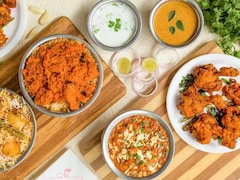By the time the last diya flickers in a Kolkata courtyard, the night has already turned sacred. The air smells faintly of ghee and incense. From distant lanes, the sound of dhak mingles with the hiss of fireworks. It is Kali Pujo night - Bengal's darker, fiercer, and deeply spiritual counterpart to Diwali. While the rest of India lights lamps for Goddess Lakshmi, Bengal turns its devotion to Goddess Kali - the formidable mother who destroys evil only to restore balance. Her presence is both feared and loved; her festival, both wild and deeply meditative.
The origins of this worship date back to the 18th century, when Raja Krishnachandra of Krishnanagar formalised large-scale community celebrations. Today, whether in Kolkata, London, or New Jersey, Bengalis continue to observe the ritual on Dipannita Amavasya - the new moon night of Kartika - with reverence that goes far beyond the ritual fire.
Why Bengal Worships Kali When India Worships Lakshmi?
Every year, Kali Pujo coincides with Diwali - yet the mood could not be more different. On October 20, 2025, as the rest of India celebrates the festival of lights, Bengal will gather under the new moon to honour the dark goddess.
According to tradition, the midnight window, or Nishita Kaal, is considered the most auspicious moment for performing the puja.
Kali Pujo 2025 Date And Time: Auspicious Tithi And Puja Muhurat:
In 2025, Kali Pujo will coincide with Diwali and fall on Monday, October 20.
- Amavasya Tithi Begins: 01:14 PM on October 20, 2025
- Amavasya Tithi Ends: 03:24 PM on October 21, 2025
- Kali Puja Nishita Kaal Muhurat: 11:41 PM (Oct 20) to 12:31 AM (Oct 21)
- Duration: 50 Minutes
(Source: pujapurohit.in)
This sacred midnight period, known as Nishita Kaal, is considered the most powerful time to perform Kali Pujo, or Shyama Pujo, invoking Goddess Kali's blessings for protection and renewal.
How Kali Pujo Is Celebrated Across Bengal And Beyond?
The night of Kali Pujo transforms Bengal. Homes, temples, and pandals glow with diyas, candles, and strings of lights - a scene reminiscent of Diwali, yet deeply spiritual in tone. The focus remains on meditation, prayer, and offering rather than celebration alone.
Devotees observe fasts or partial fasts through the day, breaking them only after the puja. The rituals are performed with red hibiscus flowers, fruits, sweets, and bhog. While animal sacrifice was once part of the tradition, it has been largely replaced by symbolic substitutes such as pumpkins, ash gourds, and cucumbers - offerings that carry the same ritual meaning without harm.
Kali Pujo Bhog Rituals: The Sacred Food Offerings
Bhog, or the sacred meal, lies at the heart of Kali Pujo. It is prepared with devotion and simplicity, reflecting the sattvic (pure) nature of the offering. The rituals begin with fasting, followed by the midnight puja, and end with the offering and sharing of bhog prasad.
The traditional bhog thali often includes:
- Khichuri
- Labra
- Luchi
- Payesh
- Bhaja
- Mishti (Bengali sweets)
- Mishti doi
- Naru (coconut or sesame laddus) and moya (puffed rice laddus)
- Fresh fruits
All dishes are cooked without onion or garlic. Interestingly, in some homes and temples, even mutton or fish dishes are included in the offering - also prepared without onion and garlic - as Goddess Kali is considered fond of such bhog. In a few places, 108 food items are offered, representing abundance and devotion in its most elaborate form.
Kali Pujo 2025 Bhog: 6 Essential Dishes For The Pujo Thali
1. Khichuri
A fragrant, semi-dry khichdi made from Gobindobhog rice and moong dal, tempered with ghee, bay leaves, ginger, cumin, and coconut. Vegetables like potato, cauliflower, peas, or even nuts and coconut chunks may be added for texture. Khichuri forms the comforting base of the bhog platter and is always a festive staple.
2. Bhaja
Crisp, golden, deep-fried vegetables such as pumpkin, brinjal, or potato slices. They are typically served in odd numbers as part of the ritual and add a satisfying crunch to the thali.
Also Read: Not Just A Snack! Classic Bengali Begun Bhaja Is A Must Try
3. Labra
A slow-cooked medley of vegetables - pumpkin, radish, spinach, and other seasonal produce - made without onion or garlic. The mild spices allow the natural sweetness of the vegetables to shine through. Labra pairs beautifully with khichuri.
4. Luchi
Soft, puffed breads made from refined flour and fried until golden. A symbol of celebration in Bengal, luchi is often served with payesh or aloo dum during festive meals.
5. Payesh
Bengali-style rice pudding prepared with Gobindobhog rice, milk, sugar, and dry fruits. Fragrant with cardamom and bay leaf, payesh is considered an auspicious sweet dish and an essential part of Kali Pujo bhog.
6. Niramish Mangsho
In Bengali cooking, "niramish" means vegetarian in spirit, referring to dishes made without onion or garlic, even if they include meat. Niramish Mangsho is one such preparation - a mutton curry offered to Goddess Kali in certain households.
The meat is marinated in curd, ginger, and turmeric, then slow-cooked in ghee with whole spices such as cardamom, cinnamon, and cloves. The result is a rich, aromatic curry that feels both indulgent and devotional.
According to food expert Poorna Banerjee, "The meat should ideally come from a non-halal Bengal goat, and the spice paste is traditionally made on a shil nora (grinding stone) for authenticity."
Representational Image
Kali Pujo: A Night Of Devotion, Light, And Cultural Pride
Kali Pujo in Bengal is more than a festival. It is a night of faith, food, and fierce love for the goddess who represents both power and compassion. From midnight prayers to the sacred bhog thali, every aspect of the celebration reflects reverence, community, and cultural identity.
Shubho Kali Pujo!
